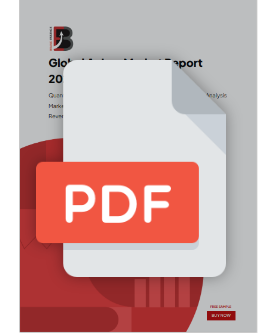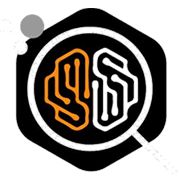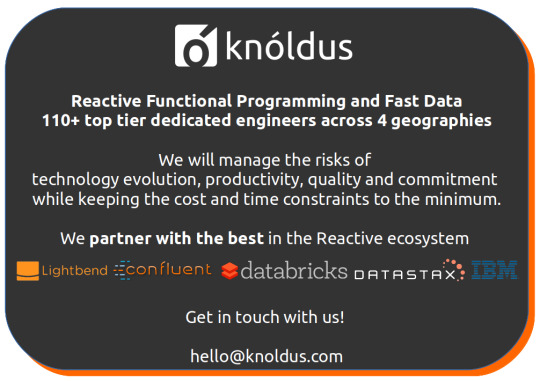#GraphDatabases
Explore tagged Tumblr posts
Text
Presenting Graph Spanner: A Reimagining of Graph Databases

Spanner Graph
Operational databases offer the basis for creating enterprise AI applications that are precise, pertinent, and based on enterprise truth as the use of AI continues to grow. At Google Cloud, the team strive to provide the greatest databases for creating and executing AI applications. In light of this, they are thrilled to introduce Graph Spanner, vector search, and sophisticated full-text search a few new features that will make it simpler for you to create effective gen AI products.
With the release of Bigtable SQL and Bigtable distributed counters, the team also revolutionising the developer experience by simplifying the process of creating at-scale apps. Lastly, they are announcing significant updates to help customers modernise their data estates by supporting their traditional corporate workloads, such as SQL Server and Oracle. Now let’s get started!
Using a graph database can be a valuable, albeit complex, approach for enterprises to gain insights from their connected data so they can create more intelligent applications. Google is excited to present Spanner Graph today, a ground-breaking solution that combines Spanner, Google’s constantly available, globally consistent database, with capabilities specifically designed for graph databases.
Graphs are a natural way to show relationships in data, which makes them useful for analysing data that is related, finding hidden patterns, and enabling applications that depend on connection knowledge. There are several applications for graphs, including route planning, customer 360, fraud detection, recommendation engines, network security, knowledge graphs, and data lineage tracing.
But implementing separate graph databases to handle these use cases frequently comes with the following drawbacks:
Data fragmentation and operational overhead: Separate graph database maintenance frequently results in data silos, added complexity, and inconsistent data copies, all of which make it more difficult to conduct effective analysis and decision-making.
Bottlenecks in terms of scalability and availability: As data volumes and complexity increase and impede corporate growth, many standalone graph databases find it difficult to fulfil the expectations of mission-critical applications in terms of scalability and availability.
Ecosystem friction and skill gaps: Adopting a fully new graph paradigm may be more difficult for organisations because of their significant investments in infrastructure and SQL knowledge. They require more resources and training to accomplish this, which could take resources away from other pressing corporate requirements.
With almost infinite scalability, Graph Spanner reinvents graph data management by delivering a unified database that seamlessly merges relational, search, graph, and AI capabilities. Spanner Graph provides you with:
Native graph experience: Based on open standards, the ISO Graph Query Language (GQL) interface provides a simple and clear method for matching patterns and navigating relationships.
Unified relational and graph models: Complete GQL and SQL interoperability eliminates data silos and gives developers the freedom to select the best tool for each given query. Data from tables and graphs can be tightly integrated to reduce operational overhead and the requirement for expensive, time-consuming data transfers.
Built-in search features: Graph data may be efficiently retrieved using keywords and semantic meaning thanks to rich vector and full-text search features.
Scalability, availability, and consistency that lead the industry: You can rely on Spanner’s renowned scalability, availability, and consistency to deliver reliable data foundations.
AI-powered insights: By integrating deeply with Vertex AI, Spanner Graph gains direct access to a robust set of AI models, which speeds up AI workflows.
Let’s examine more closely what makes Spanner Graph special
Spanner Graph provides a recognisable and adaptable graph database interface. Supported by Graph Spanner is ISO GQL, the latest global standard for graph databases. It makes it simpler to find hidden links and insights by providing a clear and simple method for matching patterns, navigating relationships, and filtering results in graph data.
Spanner Graph functions well with both full-text and vector searches. With the combination, you may use GQL to navigate relationships within graph structures and search to locate graph contents. To be more precise, you can use full-text search to identify nodes or edges that include particular keywords or use vector search to find nodes or edges based on semantic meaning. GQL allows you to easily explore the remainder of the graph from these beginning locations. This unified capability enables you to find hidden connections, patterns, and insights that would be challenging to find using any one method by combining various complimentary strategies.
Spanner Graph provides industry-leading consistency and availability while scaling beyond trillions of edges. Since Graph Spanner inherits Spanner’s nearly limitless scalability, industry-best availability, and worldwide consistency, it’s an excellent choice for even the most crucial graph applications. Specifically, without requiring your involvement, Spanner’s transparent sharding may leverage massively parallel query processing and scale elastically to very huge data sets.
Spanner Graph’s tight integration with Vertex AI speeds up your AI workflows. Spanner Graph has a close integration with Vertex AI, the unified, fully managed AI development platform offered by Google Cloud. Using the Graph Spanner schema and query, you may immediately access Vertex AI’s vast collection of generative and predictive models, which can expedite your AI workflow. To enrich your graph, for instance, you can utilise LLMs to build text embeddings for graph nodes and edges. After that, you can use vector search to extract data from your graph in the semantic space.
You may create more intelligent applications with Spanner Graph
With practically limitless scalability, Spanner Graph effortlessly combines graph, relational, search, and AI capabilities, creating a plethora of opportunities:
Product recommendations: To create a knowledge network full of context, Spanner network represents the intricate interactions that exist between people, products, and preferences. By fusing full-text search with quick graph traversal, you may recommend products based on user searches, past purchases, preferences, and similarity to other users.
Financial fraud detection: It is simpler to spot questionable connections when financial entities like accounts, transactions, and people are represented naturally in Spanner Graphs. Similar patterns and anomalies in the embedding space are found by vector search. Financial institutions can minimise financial losses by promptly and correctly identifying possible dangers through the combination of these technologies.
Social networks: Even in the biggest social networks, the Graph Spanner model logically individuals, groups, interests, and interactions. For individualised recommendations, it facilitates the quick identification of trends like overlapping group memberships, mutual friends, or related interests. Users can quickly locate individuals, groups, posts, or particular subjects by using natural language searches with the integrated full-text search feature.
Gaming: Player characters, objects, places, and the connections between them are all natural representations of elements in game environments. Effective link traversal is made possible by the Spanner Graph, and this is crucial for game features like pathfinding, inventory control, and social interactions. Furthermore, even at times of high usage, Spanner Graph’s global consistency and scalability ensure a smooth and fair experience for every player.
Network security: Recognising trends and abnormalities requires an understanding of the relationships that exist between individuals, devices, and events over time. Security experts can employ graph capabilities to trace the origins of attacks, evaluate the effect of security breaches, and correlate these findings with temporal trends for proactive threat detection and mitigation thanks to Graph Spanner relational and graph interoperability.
GraphRAG: By utilising a knowledge graph to anchor foundation models, Spanner Graph elevates Retrieval Augmented Generation (RAG) to a new level. Furthermore, Spanner Graph’s integration of tabular and graph data enhances your AI applications by providing contextual information that neither format could provide on its own. It is capable of handling even the largest knowledge graphs due to its unparalleled scalability. Your GenAI workflows are streamlined with integrated Vertex AI and built-in vector search.
Read more on govindhtech.com
#PresentingGraphSpanner#GraphDatabases#SpannerGraph#VertexAI#AIapplications#GoogleCloud#AIproducts#vectorsearch#utiliseLLMs#game#ai#GraphSpanner#datasilos#technology#technews#news#govindhtech
0 notes
Text
Consider graph databases as specialized instruments, similar to a detective's tools, for figuring out intricate linkages inside data. Graph databases, which are part of the NoSQL family, are intended to make information relationships readily visible, in contrast to conventional databases that resemble spreadsheets.
These databases are excellent at handling complex data linkages; they act as amiable tour guides through the complex web of links found in your data. Graph databases make it easier to understand these interactions, whether you're looking at social network connections or figuring out links within a vast corporation.
0 notes
Video
youtube
Microsoft GraphRAG Meets Neo4j: A Game-Changer!#TechRevolution #Scientif...
Microsoft GraphRAG Meets Neo4j: A Game-Changer!" highlights the revolutionary integration of Microsoft GraphRAG with Neo4j, transforming data analytics and relationship mapping. Microsoft GraphRAG, known for its robust graph-based AI capabilities, now seamlessly collaborates with Neo4j, the leading graph database technology. This powerful synergy enhances data connectivity, enabling organizations to uncover complex relationships and insights with unprecedented efficiency. By combining Microsoft’s advanced AI with Neo4j's scalable graph database, users can achieve superior data modeling, real-time analytics, and predictive intelligence. This integration paves the way for innovative applications across various industries, setting a new standard in data-driven decision-making and knowledge discovery
#MicrosoftGraphRAG #Neo4j #GraphDatabase #DataAnalytics #AI #BigData #DataScience #MachineLearning #PredictiveAnalytics #DataVisualization #TechInnovation #KnowledgeDiscovery #ScienceFather #Innovation #Research #STEM #ScienceConference #TechConference #Researcher #ScientificResearch #AcademicResearch #Science #STEM #Innovation #ResearchCommunity #PhDLife #LabLife #ResearchAndDevelopment #R&D #ScienceMatters #ResearchImpact #DataScience #TechResearch #ScientificDiscovery #ResearchLab #ResearcherLife #FieldResearch #ScienceCommunication #Scholar #PostDoc #ResearchProjects #ScienceInnovation #FutureOfResearch #AcademicLife #ResearchFunding #ResearchCollaboration #ScienceIsAwesome #ScientificInnovation
International Young Scientist Awards
Website link: youngscientistawards.com
Nomination Link : https://x-i.me/suwyou5
Contact Us: [email protected]
Social Media:
Twitter : https://twitter.com/youngsc06963908
Linkedin- : https://www.linkedin.com/in/shravya-r...
Pinterest : https://in.pinterest.com/youngscienti...
Blog : https://youngscientistaward.blogspot....
Tumblr : https://www.tumblr.com/blog/shravya96
0 notes
Link
Graph databases are surely the future. But what are they? You can check out this blogpost to get a gentle introduction to graphs and graph databases.
3 notes
·
View notes
Photo


📢 #Aarth has been recognized as one of Top key players in global market for Graph based solution in Graph industry 🚀 Don't just take our word for it, check out the latest research reports shared by @Global Market Research and @AI Market Report! 📊💻 Click on the links to get your hands on these insightful reports and learn more ! Market Research Intellect Report https://www.marketresearchintellect.com/download-sample/?rid=182540&utm_source=Linkedin&utm_medium=014 Decision Intelligence Market Report https://www.aimarketreport.com/downloadSample/PostId/826?utm_source=Aniket&utm_medium=LinkedIn
#Aarth#GraphSolutions#GlobalMarketResearch#AIMarketReport#graphdatabase#rdf#digitaltwin#IndustryRevolution#Innovation#Technology#DataDriven#InsightfulReports
1 note
·
View note
Text
Best field force management software for small business
Field force automation software supports field service businesses to manage and optimize the business activities performed by field-based workers. Companies originally use the field service management (FSM) software that requires on-site equipment deployment and maintenance, cleaning, repairs, and the like. In addition, utility companies and service-oriented businesses that deliver, repair, or clean at a customer's location also leverage FSM software. Managers and supervisors prefer to use field service management software to allocate workers to field tasks and monitor their performance. Field workers use it to find information about their tasks, report on their work, and optimize the time and resources allocated for each job. Field service management software usually integrates with GPS for location tracking and customer relationship management (CRM) to find customer information.
0 notes
Text
オープンソースのグラフデータベース「Neo4j 4.0」正式版リリース。リアクティブアーキテクチャを新採用
from https://www.publickey1.jp/blog/20/neo4j_40.html

オープンソースのグラフデータベースであるNeo4jの最新版「Neo4j Graph Database 4.0」正式版がリリースされまし���。
Introducing Neo4j Graph Database 4.0 [GA Release] – by @jimwebber, Chief Scientist @Neo4jhttps://t.co/X8csuFuEFC#GraphDatabase #Neo4j
— Neo4j (@neo4j) February 4, 2020
一般に、リレーショナルデータベースではテーブルのあいだで関係が設定されますが、グラフデータベースではデータひとつひとつがほかのデータとの関係を持てます。
また、あるデータとデータとの関係において重要度や距離、評価、時間間隔といった属性も持たせることができます。
そのためリレーショナルデータベースでは商品一覧を記録した商品テーブルを、売り上げを記録した売り上げテーブルと連係させることで、どの商品がどれだけ売れたかを示すことができる、といった用途に使われるのに対して、グラフデータベースではソーシャルメディアのような、ユーザーが別のユーザーをフォローしている状態や、複数のドキュメントのあいだの参照関係、電力や通信機器などのネットワーク構造や状態をデータベース化する用途などに向いています。
Neo4j 4.0でリアクティブアーキテクチャを採用
Neo4jはそうしたグラフデータベースの中でも代表的なソフトウェアの1つです。
高い処理性能を持ちつつ、データの整合性を保つトランザクション処理が可能で、クラスタ構成による分散処理もサポート。障害時のフェイルオーバーも可能です。
クエリ言語には独自の「Cypher」を用います。
Neo4j 4.0での最大の目玉は、Reactive Architecture(リアクティブアーキテクチャ)を備えたことです。
これは大規模な検索結果が返ってくるときでも、クライアント側がそれを一括で受け止めるのではなく、返ってくるフローを制御できるというもの。
「Introducing Neo4j Graph Database 4.0 [GA Release]」から引用します。
A client application fully controls the flow of records, which a server or cluster produces, so there’s no longer a tsunami of records flowing back. Now we have control flow that goes all the way through the stack, whether it’s synchronous or asynchronous execution. This is based on reactive streams with a non-blocking, back-pressure library, and it’s exposed through the reactive API in version 4.0 of the Drivers.
クライアントはサーバやクラスタが生成したレコードの流れをすべてコントロールすることで、津波のように大量のレコードがクライアントに返ってくる、ということはもはななくなった。
同期的もしくは非同期的な実行であっても、(Neo4jの)スタック全体のフローをコントロールできる。これはノンブロッキングとバックプレッシャーライブラリによ/p>
また、Neo4j 4.0では、データを任意に分割して複数のデータベースへ分散させるシャーディングと、複数のデータベースを連係させるフェデレーションによってデータベースのスケールアウトを実現、より高いスケーラビリティを提供するとしています。
さらに同一インスタンスもしくは同一クラスタ内に複数のデータベースを持てるマルチデータベース機能を搭載し、より柔軟なデータベース配置も可能になりました。
Neo4jには有償のEnterprise Editionと無償のCommunity Editionがあります。対応OSはLinux、Windows、macOS。
https://www.publickey1.jp/2020/2RYYrcRE.jpg
0 notes
Text
Getting Started Dgraph: An Introduction
Getting Started Dgraph: An Introduction

In our today’s blog, we will discuss the Dgraph. Dgraph is a Graph Database which gives us relief to use the traditional database. In the traditional database, we face the problem whenever we have to create them to handle the interconnected data. In our today’s scenario, there are lots of data present and those are interconnected in some way. So if we use the traditional database then we will…
View On WordPress
0 notes
Link
Check out this article on "#Future of #datatechnology", explaining the power of Graph & Knowledge graphs & how they are shaping the future of #graphtechnology by Vikas Virupaksh. https://lnkd.in/g7R_2hUr
#Future#datatechnology#graphtechnology#knowledgegraph#rdf#graphdatabase#innovation#digitaltransformation#digitaltwins#aarth#neo4j#eccenca#processautomation#hyperautomation#contextualai
1 note
·
View note
Text
RT @neo4j: Introducing Neo4j Graph Database 4.0 [GA Release] – by @jimwebber, Chief Scientist @Neo4j https://t.co/X8csuFuEFC #GraphDatabase #Neo4j
Introducing Neo4j Graph Database 4.0 [GA Release] – by @jimwebber, Chief Scientist @Neo4jhttps://t.co/X8csuFuEFC#GraphDatabase #Neo4j
— Neo4j (@neo4j) February 4, 2020
from Twitter https://twitter.com/paolodonorio February 04, 2020 at 01:18PM via IFTTT
0 notes
Text
CloudEXPO TV: @IBMGraph with @ShannaKam | @CloudExpo @IBMcloud #GIS #GraphDatabases
http://i.securitythinkingcap.com/R44pDJ
0 notes
Text
Webinar: Graph 101, An Introduction to Graph...
Webinar: Graph 101, An Introduction to #GraphDatabases on February 23rd! #GraphDB
Webinar: Graph 101, An Introduction to Graph...
IBM Technical Rock Star Program
0 notes
Text
Webinar: Graph 101, An Introduction to Graph...
Webinar: Graph 101, An Introduction to #GraphDatabases on February 23rd! #GraphDB
Webinar: Graph 101, An Introduction to Graph...
IBM Technical Rock Star Program
0 notes
Text
Tweeted
#knowledgeage #computation #MachineLearning #ai #deeplearning #NeuralNetwork #knowledge #graphdatabase #logic #patterns pic.twitter.com/SrmS6rtp8S
— The Complexity Void (@complexityvoid) December 17, 2019
0 notes
Text
Webinar: Graph 101, An Introduction to Graph...
Webinar: Graph 101, An Introduction to #GraphDatabases on February 23rd! #GraphDB
Webinar: Graph 101, An Introduction to Graph...
IBM Technical Rock Star Program
0 notes